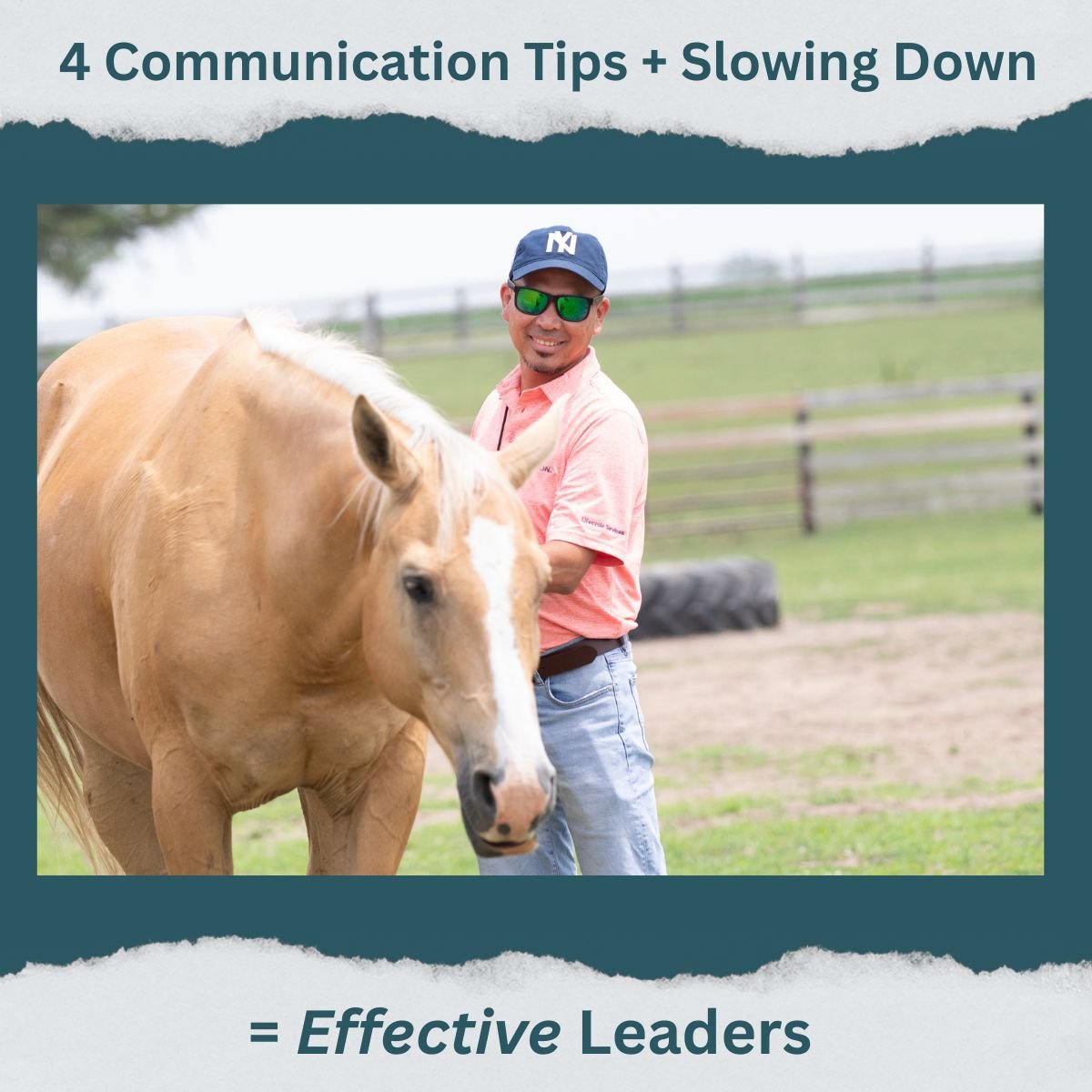4 Communication Tips + Slowing Down = Effective Leaders
A business coach once shared this observation: Every company—no matter what the industry, size or geographic location—faces the same issues they just manifest differently.
After nearly 30 years as an entrepreneur, consultant and coach, I can say without hesitation one of the biggest issues my clients face is the need for effective leadership .
Busy: The Poor Leadership Culprit
The biggest culprit sabotaging effective leadership is something that’s long been a badge of honor--being busy.
The excuse of “being too busy” to make communication a priority is a common refrain. As a result, communicating vision, key business strategies, goals and news to employees is often an afterthought rather than a priority.
The consequence is a hurried communication effort to team members that often lacks empathy, compassion and emotional intelligence. As Chip Ingram says, “No amount of gift or brains can make up for lack of emotional intelligence.”
Like many other soft skills, communication tends to be undervalued because it’s difficult to measure. However, compounded over time, neglecting the value of communication leads to severe workplace disengagement and high turnover rates.
When humans are busy, we don’t take the time to communicate. It’s not a matter of having time; it’s about making time.
Example 1: The Busy Leader’s Dialogue
Take a moment to reflect on the last time you passed by a team member in the office. Did it sound something like this?
Leader: Good morning!
Team Member: Hi!
Leader: How are you today?
Team Member: Good! Busy! You?
Leader: Busy!
We’ve all been there. However, is this the type of communication from a leader that’s vulnerable, builds trust, fosters connectivity and nurtures team relationships?
Example 2: The Effective Leader’s Dialogue
Consider how much more valued your team would feel if the exchange were more like this:
Leader: Good morning! Hey, how was your speaking engagement last week?
Team Member: How thoughtful of you to remember! It was inspiring. The people at the conference were willing to have an interactive conversation with me rather than passively sitting and listening. I’m incredibly grateful for the opportunity and I made some great connections. Thank you for asking. How about you? How was your trip over the long weekend?
Leader: My trip was relaxing and refreshing. I enjoyed some quiet time on the beach with a book.
Team Member: That does sound relaxing. I’ve got to run for a meeting. See you tomorrow!
Leader: Sounds good!
The Power of Purposeful + Effective Communication
What’s the value of the second dialogue example? Each person took the time to be vulnerable enough to share something about themselves.
The investment of time nurtures relationships. Relationships are at the center of who we are. They make working more enjoyable, improve productivity and cultivate trust and mutual respect. These are essential elements of a balanced work environment.
Four Ways to Communicate More Purposefully + Effectively
The first step toward thoughtful and meaningful communication is to simply start with one person every day. You’ll gradually build new neuropathways in your brain that empower you to make this your default behavior rather than having to work at it so diligently.
1. Breathe
Your breath is your body’s steering wheel. Just holding your breath for a second or two, or breathing in short, shallow breaths, communicates a message of anxiety to the brain that causes disintegration of the brain and a reduced flow of electrical energy to the rest of the body.
Trade shallow breathing for diaphragmatic breathing, also known as deep breathing. It’s a breathing technique that uses the diaphragm (a muscle located beneath the lungs) to draw air into the lungs. It involves a slow, deep inhale, focusing on expanding the belly rather than the chest, followed by a slow exhale.
It can help increase oxygen intake, lower blood pressure and heart rate, and reduce muscle tension.
2. Be Present
Exist only in that moment. Concentrate solely on what your team member is saying. Don’t give energy to think about how you will respond.
3. Slow Down
There are multiple benefits to slowing down. Once you make the choice to do less, you’ll discover that you accomplish more, including improved focus, stronger relationships, clearer communication and better perspective.
4. Be Curious
Humans love to talk about themselves. One way you can be memorable is by asking questions, thereby inviting your team to talk about what’s important to them. Plus, you learn a lot from listening to others.
Each of us is capable of impacting others in one of two ways: positively or negatively. Are you a courageous leader willing to look more closely at the way you communicate in the workplace?
Let’s have a conversation about how trading busyness for slowness through life-changing, off-site, ground-based, guided leadership experiences with horses can improve your communication and increase leadership efficacy.

